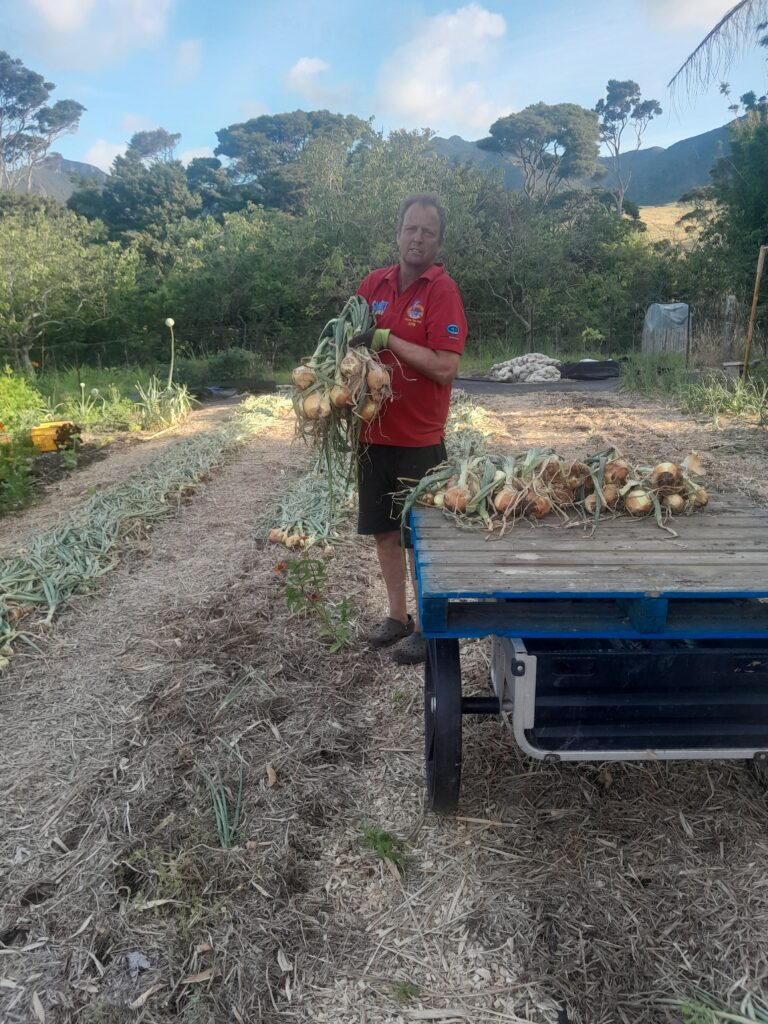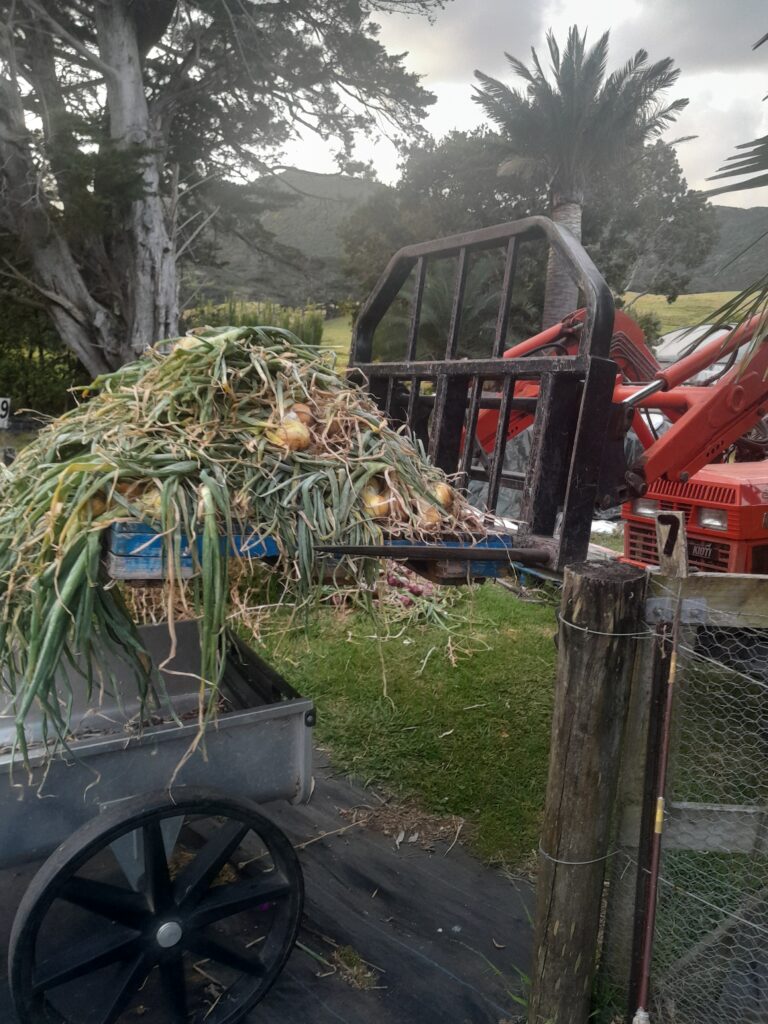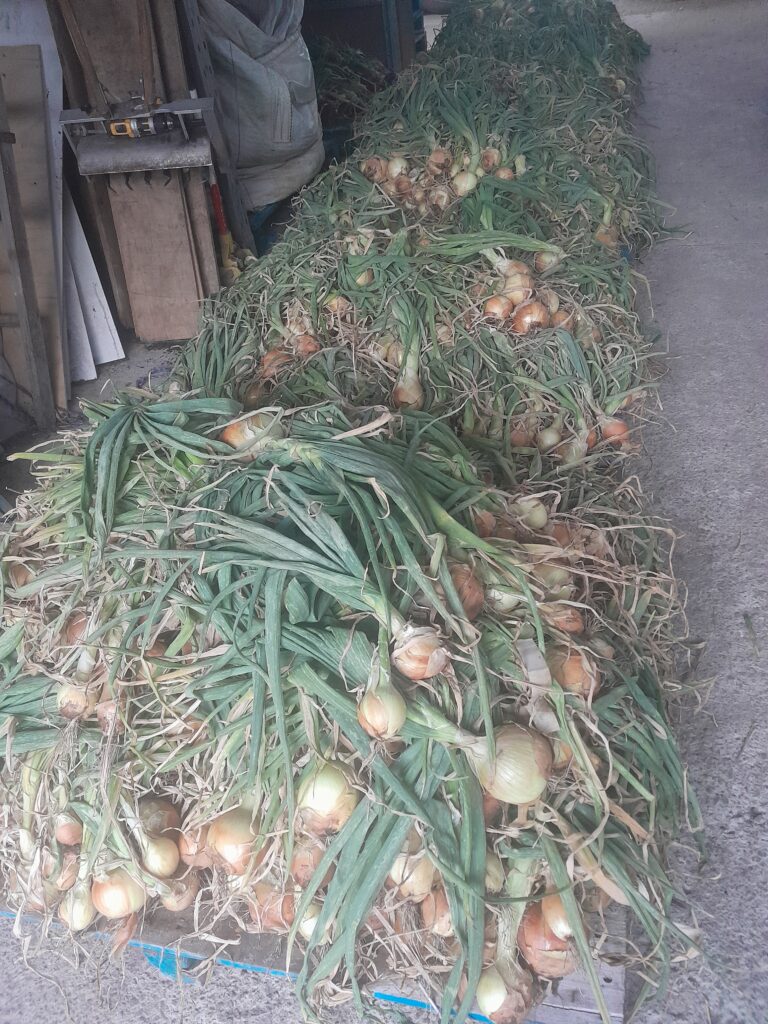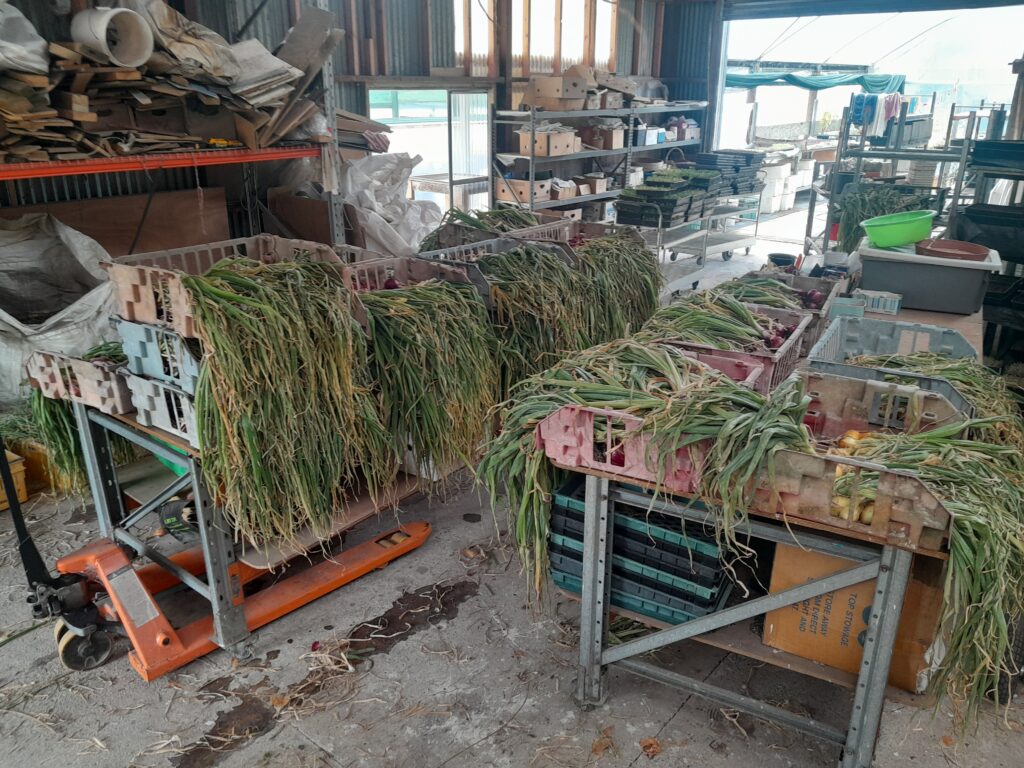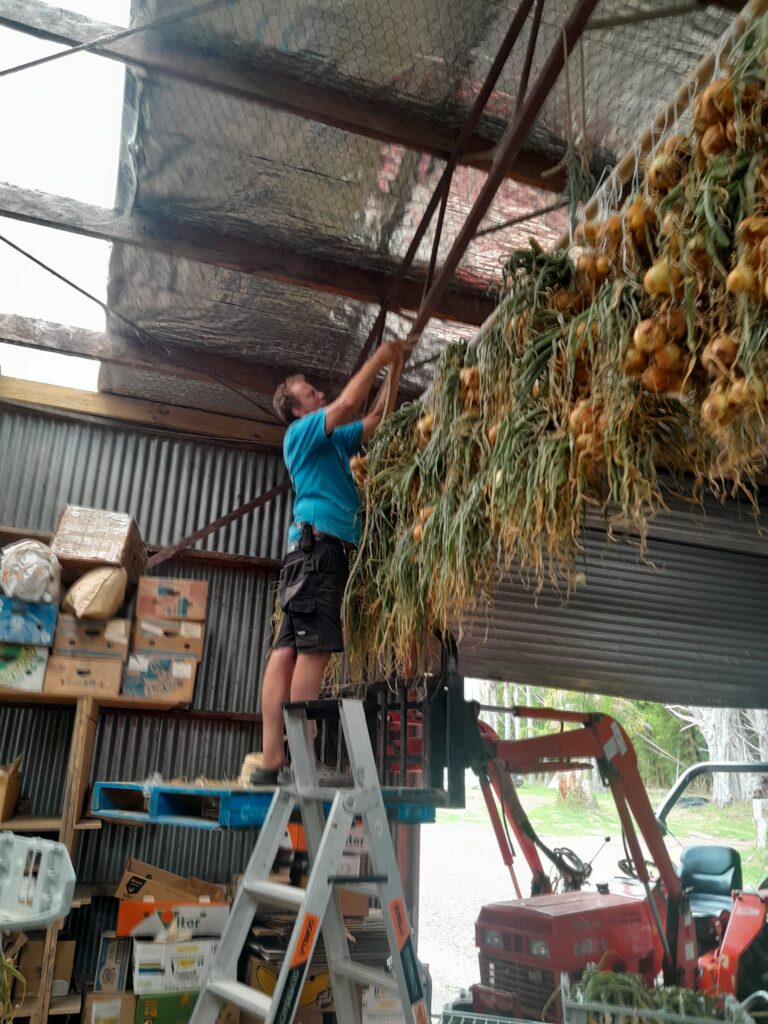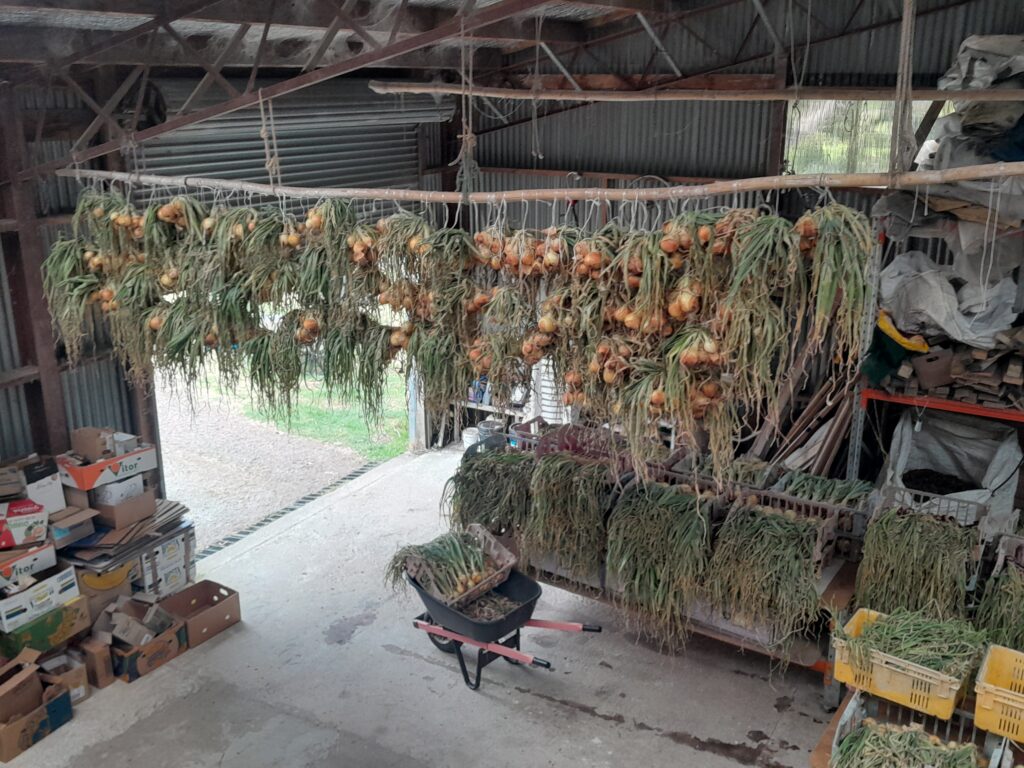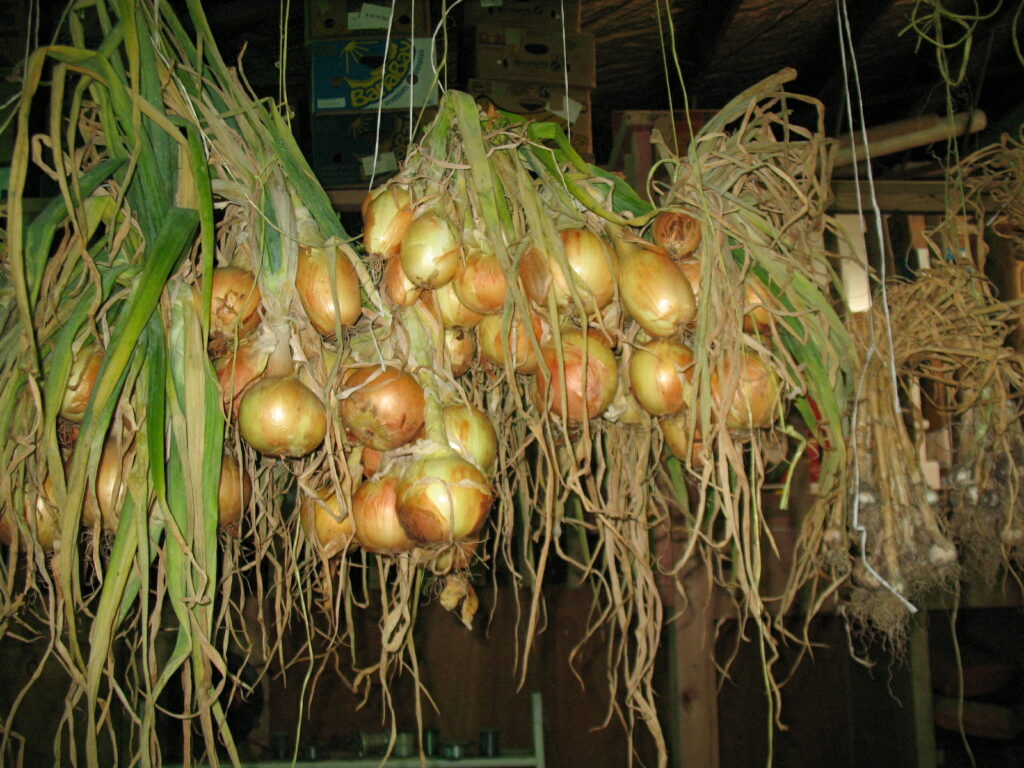
Our foray into growing onions began several years ago, inspired by a visit to Les and Bev Blackwell’s garden, back in the day when Caity was tutoring the NorthTec Horticulture classes, some time around 2009. Les grew his entire year’s supply of 600 onions in a beautiful raised bed, all mulched with chopped sugar cane, not a weed in sight! It made so much sense!
Onions have to be one of the most widely and reguarly consumed vegetables … I know that in our home, we start cooking most meals by gently sautéing an onion or two! That’s 360 onions already. Then there are chutneys and kassundis etc! And for good reason – as well as adding depth of flavour and sweetness to any dish – onions are SO GOOD for you!
In 2014, a panel of judges of German naturopathic association ‘NHV Theophrastus’ named onion the medicinal plant of the year! Onions are loaded with antioxidants, flavonoids including quercitin, prebiotics, and contain vitamin C, fiber, Vitamin B6 and folate, and potassium. They are also antimicrobial. They benefit heart, gut and bone health.
Unfotunately, conventionally grown onions are grown in vast monocultures over several months, which means they are an attractive proposition for many pests, so they are regularly sprayed with some pretty nasty pesticides and fungicides. These are absorbed into the leaves, which eventually dry off to form the brown wrappers that enclose the onion, as well as the layers of onion inside.
So that visit to Les and Bev showed us growing great onions with only natural, non toxic inputs while also feeding the soil is entirely possible.
Over the years since then, we have trialled growing several varieties for our own use, including Pukekohe Long Keeper as the main storage onion, Walla Walla which is a HUGE white onion, very crisp and sweet for fresh eating and pickling, various red onions, banana shallots from Motueka and Zebruno banana shallots from King’s Seeds, as well as little Purplettes which are a small salad onion. We always struggled with red onions not bulbing up well and just looking like leeks and going straight to flower. We may have sown them too late.
This year (2025) we sowed our onions a month earlier than previously, at the beginning of July, into 18 trays of ten cm spacing paperchains, which have 256 cells each, for a total of about 4500 seedlings. About half were longkeepers, a third red onions and the rest banana shallots. These were nurtured in our greenhouse for the next two months and planted out with our PaperPot transplanter at the end of August, four rows 20 cm apart per 21 metre bed (90cm wide). We had two trays surplus, which was handy – it was very windy and dry at the time of planting and we lost about 500 plants, but were able to fill in the gaps with the extras.
We knew from previous experience that letting an onion bed get weedy is disastrous. As onions are planted so densely, it is difficult to hoe between the rows, and if the weeds get too big, game over as pulling the weeds out is not only terribly time consuming as you have to be so careful, but if they get too big, the roots of the onions will get damaged in the process.
So bed preparation had started a few weeks earlier, broadforking the beds, spreading rock dust and gypsum. We used cycles of laying tarps to kill off weeds, and lifting them to stimulate more weed seed germination then tarping again, over 3 cycles. We had a huge weed seed bank!
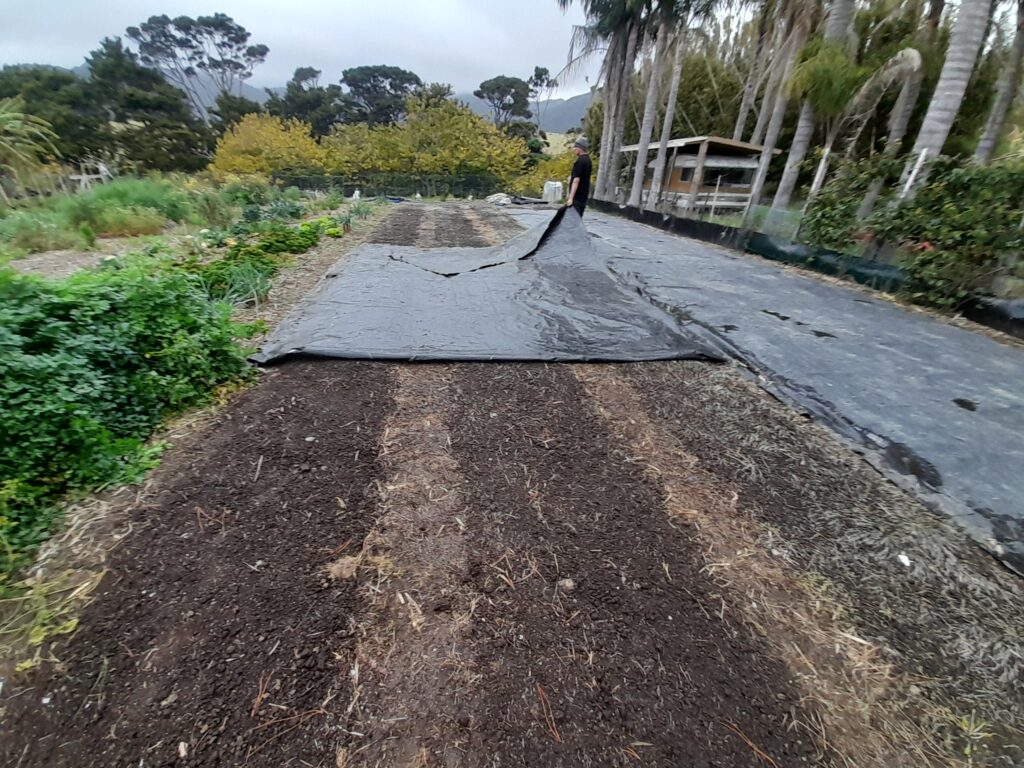
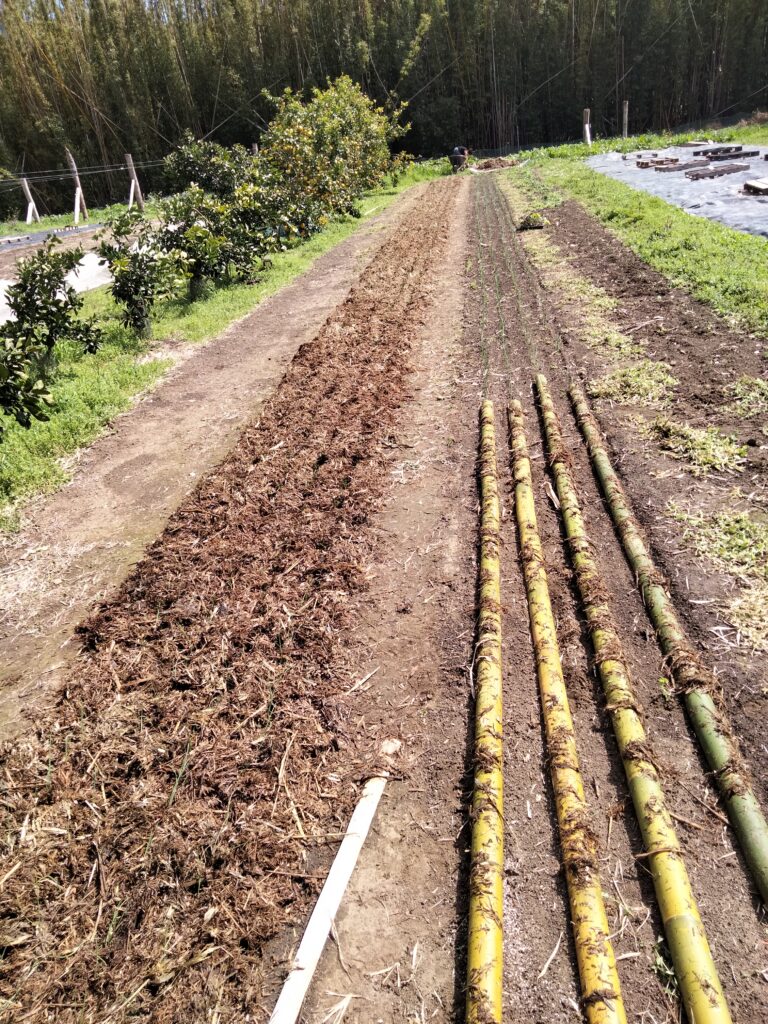
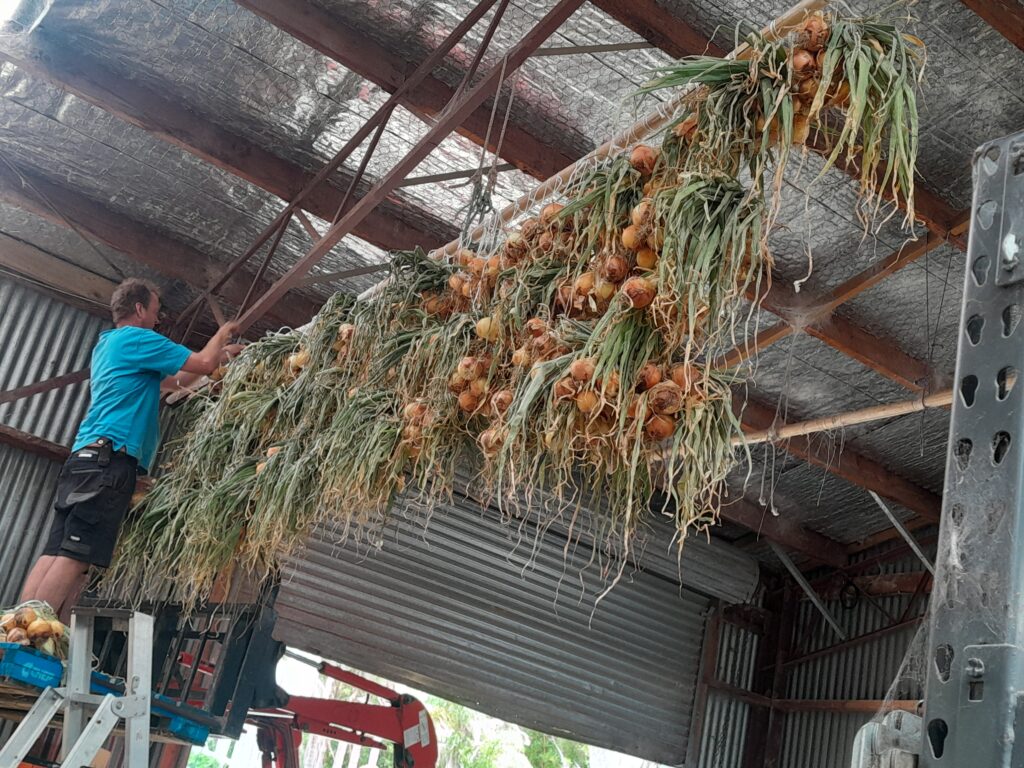
After planting, we lay drip tape irrigation alongside each row of seedlings so we could keep them growing well. We let the seedlings settle in for about 2 weeks, before spreading thick banna grass mulch between the rows of onions. This had to be chipped with our Hansa chipper. To prevent the seedlings being buried by the mulch, we laid split bamboo lengths over the 4 rows of seedlings before laying the mulch down from the Bernies Barrow (which straddled the beds). Unfortunately the mulch wasn’t quite tight enough up against the young onion plants so we got a lot of small weeds growing in the gaps, which then had to be carefully hand pulled and then the mulch pushed up tight against the young onion plants, taking several hours over several days!
The last step was laying bamboo chip on the pathways, to ensure that the next few months of growing would be labour free while the onions did their thing. Which it pretty much was, with regular monitoring for pests and weeds.
After a rough start with all that wind and dry spring, the rest of the season was mostly ideal, with decent regular rains to really saturate the soil and occasional watering via the drip tape. It’s amazing to feel how damp soil can be under mulch, while unprotected soil is bone dry. The roots of the onions come right up to the surface as the mulch breaks down and releases nutrients via the microbes.
Hhowever it became very windy and quite dry again in late November/December and the onions started to get thrips, which scrape the leaves and leave whitish streaks of damaged leaf tissue, but as we were so close to harvest, it wasn’t a major issue. (In a previous year we got thrips quite early on so we brought in predatory mites from BioForce and before we knew it we had healthy foliage again.)
The onions started bulbing up towards the end of November and we were pulling the first red onions by December 20. More and more onions started to lodge, the reds first and then the long keepers. The banana shallots were quite mixed.
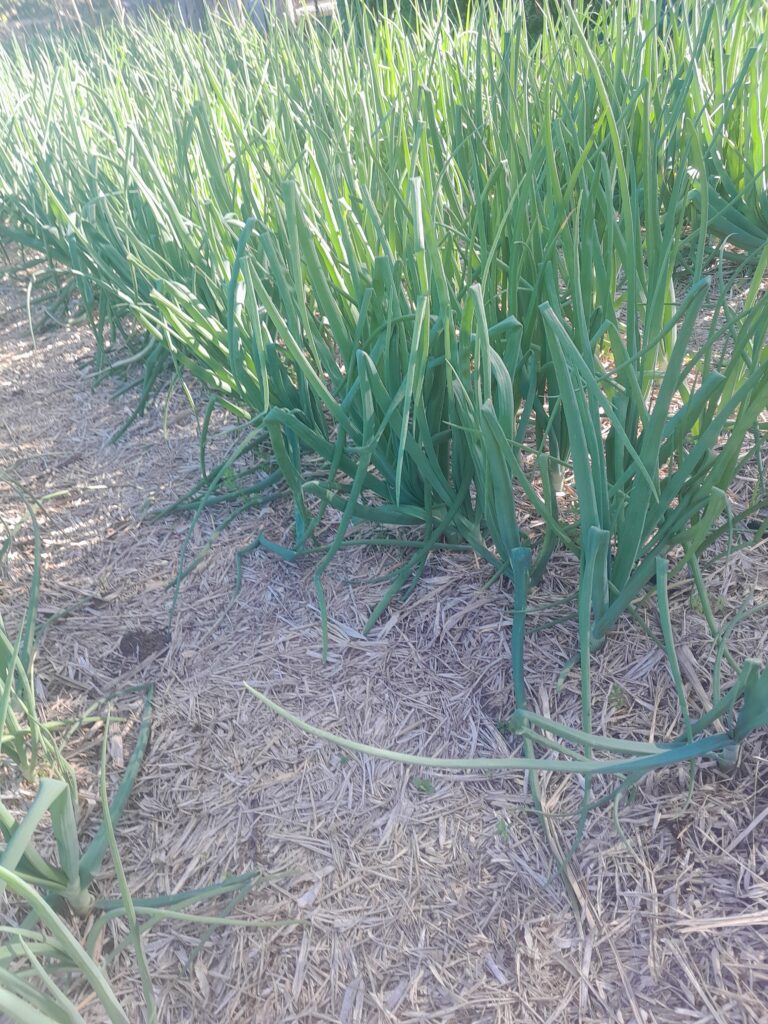
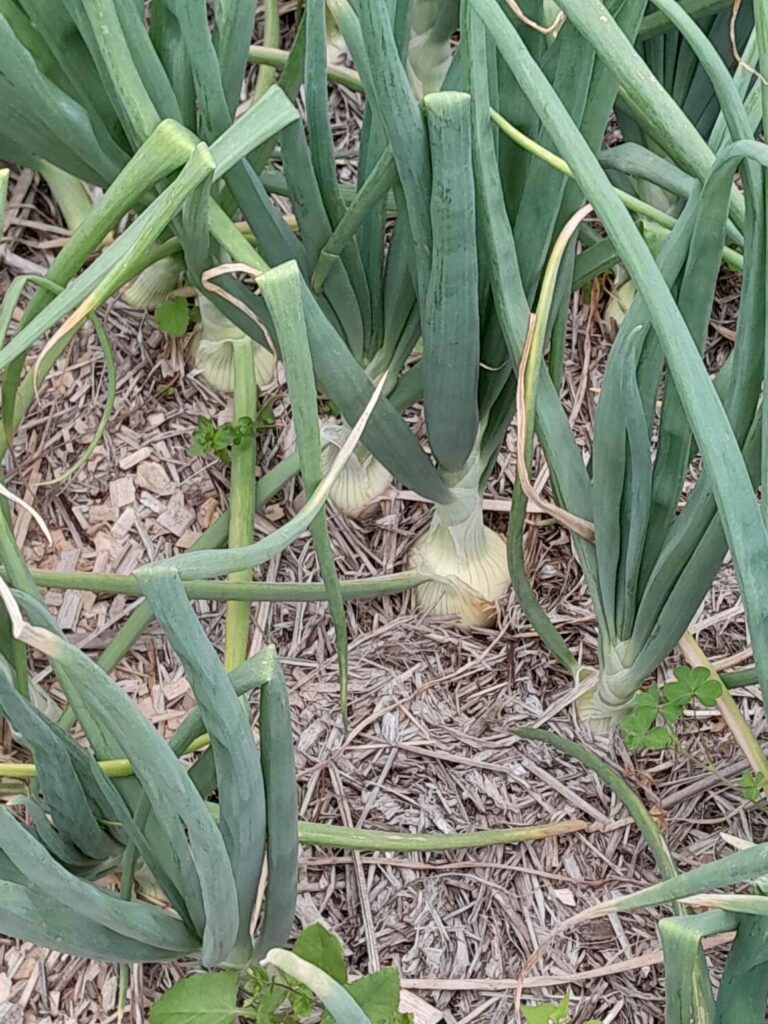
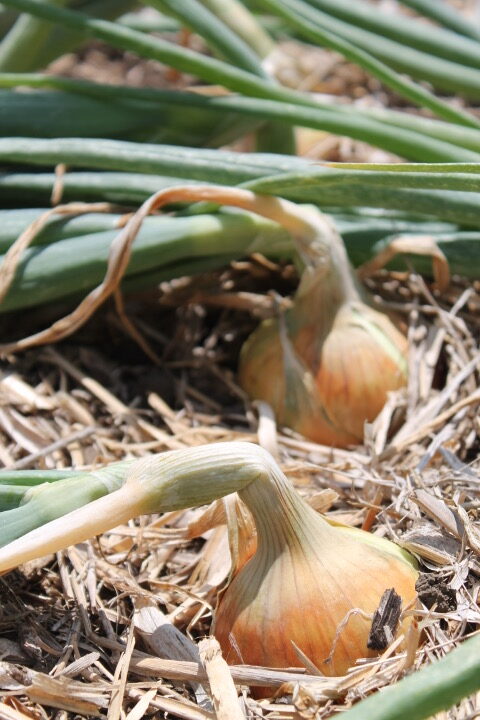
Rain was forecast for the weekend of the 18/19 January and we really did not want the onions, which were drying off well and lodging, to get reinvigorated by the rain and send out new roots, so Gerald did the major harvest on the 17th of January, laying the onions out over each other to allow the sun and wind to start drying off the foliage.
The next day, (after doing our microgreen harvest in the morning), Gerald loaded a pallet onto our Bernie’s Barrow, and methodically went up the rows, loading the onions onto the pallet, which he then lifted out of the block with our Daedong tractor and into the shed. It was all very efficient and we had the entire crop under shelter by dinner time.
The next big job was sorting the onions by size, and hanging the onions we want to store!
Our onions will be available at the upcoming Growers and Makers Markets and can also be ordered here.
